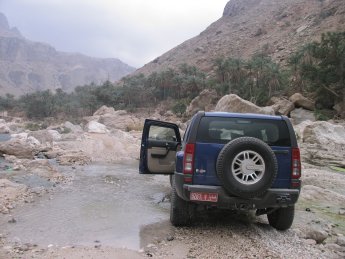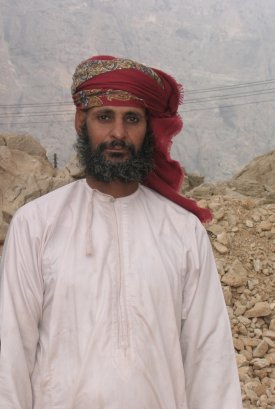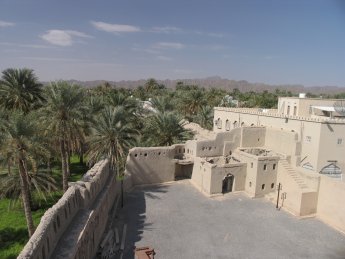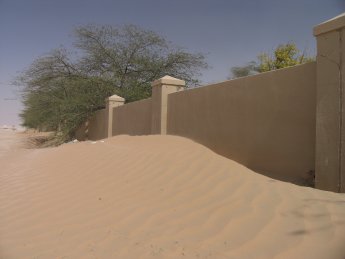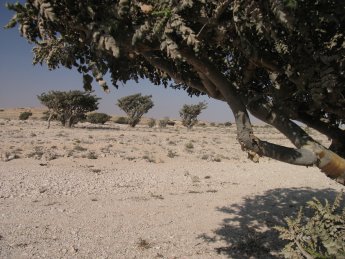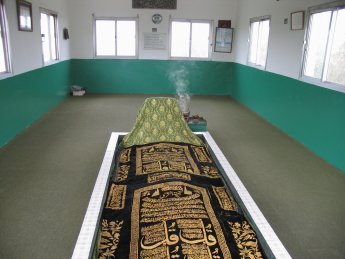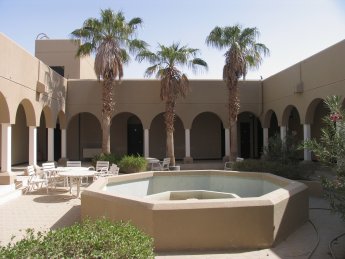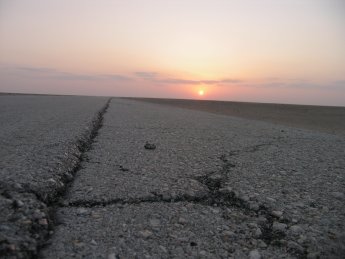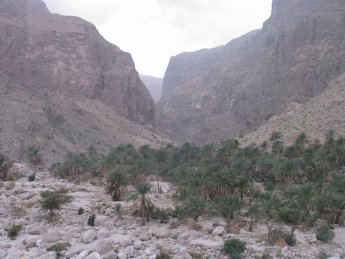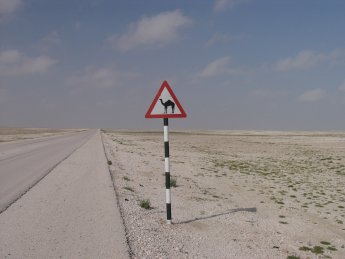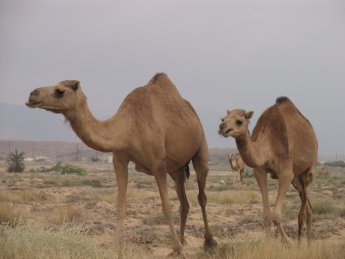It is fairly simple, but by using various marinades and impregnating meat with spices, the result is a mouth-watering concoction which stimulates the tastebuds. Chicken, fish and mutton are regularly used in dishes. A favourite drink is laban, a salty buttermilk. Yoghurt drinks, flavoured with cardamom and pistachio nuts are also very popular.
Although spices, herbs, onion, garlic and lime are liberally used in traditional Omani cuisine, unlike similar Asian food, it is not hot. Omani cuisine is also distinct from the indigenous foods of other Gulf states and even varies within the Sultanate's different regions. The differences between some of the dishes prepared in Salalah, in the south, and those prepared in Muscat, in the north, are so market that it is difficult to find anything common between them. However, one delight that remains a symbol of Omani hospitality throughout the country are the ubiquitous dates, served with khawa, or Omani coffee. Khawa is prepared from freshly roasted ground coffee mixed with cardamom powder.
Special dishes are prepared for festive occasions. The Islamic world celebrates two main religious festivals - Eid Al Fitr and Eid Al Adha. Eid Al Fitr is celebrated following the Holy Month of Ramadan when people complete their obligatory fasting for 30 days. Eid Al Adha is celebrated on completing the Haj, or pilgrimage, to Mecca, commemorating the sacrifice of Abraham. Dishes prepared during Ramadan are very seldom cooked on other occasions.
Food cooked on important occasions, such as Eid, is of an infinite variety. Omanis across the country serve an array of dishes. In Dhofar and Wusta, the festivities start with ruz al mudhroub, a dish made of cooked rice and served with fried fish, and maqdeed, special dried meat. In Muscat, Al Batinah, Dahira and Sharqiya regions, muqalab, a dish of tripe and pluck cooked with crushed or ground spices (cinnamon, cardamom, clove, back pepper, ginger, garlic and nutmeg), dominates the menu. Other dishes served during Eid festivities include arsia, a dish of lamb meat cooked with rice, and mishkak, skewered meat grilled on charcoal.
Lunch on the first day of Eid is usually harees, which is made from wheat mixed with meat. Lunch on the second day is mishkak, while on the third and last day, shuwa forms the whole day's meal.
However, it is during Ramadan that one can experience Omani food at its best and two of the most popular traditional dishes served at Iftar, the breaking of the fast include sakhana, a thick, sweet soup made of wheat, date, molasses and milk and fatta, a meat and vegetable dish, mixed with khubz rakhal, thin Omani bread, made out of unleavened dough.
Shuwa is a typically Omani delicacy prepared only on very special occasions. Whole villages participate in the cooking of the dish which consists of a whole cow or goat roasted for up to two days in an special oven prepared in a pit dug in the ground.
The method of preparing shuwa is elaborate. The meat is marinated with red pepper, turmeric, coriander, cumin, cardamom, garlic and vinegar and then wrapped in sacks made of dry banana or palm leaves. These sacks are then thrown into the smoldering oven, which is covered with a lid and sealed so that no smoke escapes. In some villages, the meat is
Special dishes are prepared for festive occasions. The Islamic world celebrates two main religious festivals - Eid Al Fitr and Eid Al Adha. Eid Al Fitr is celebrated following the Holy Month of Ramadan when people complete their obligatory fasting for 30 days. Eid Al Adha is celebrated on completing the Haj, or pilgrimage, to Mecca, commemorating the sacrifice of Abraham. Dishes prepared during Ramadan are very seldom cooked on other occasions.
Food cooked on important occasions, such as Eid, is of an infinite variety. Omanis across the country serve an array of dishes. In Dhofar and Wusta, the festivities start with ruz al mudhroub, a dish made of cooked rice and served with fried fish, and maqdeed, special dried meat. In Muscat, Al Batinah, Dahira and Sharqiya regions, muqalab, a dish of tripe and pluck cooked with crushed or ground spices (cinnamon, cardamom, clove, back pepper, ginger, garlic and nutmeg), dominates the menu. Other dishes served during Eid festivities include arsia, a dish of lamb meat cooked with rice, and mishkak, skewered meat grilled on charcoal.
Lunch on the first day of Eid is usually harees, which is made from wheat mixed with meat. Lunch on the second day is mishkak, while on the third and last day, shuwa forms the whole day's meal.
However, it is during Ramadan that one can experience Omani food at its best and two of the most popular traditional dishes served at Iftar, the breaking of the fast include sakhana, a thick, sweet soup made of wheat, date, molasses and milk and fatta, a meat and vegetable dish, mixed with khubz rakhal, thin Omani bread, made out of unleavened dough.
Shuwa is a typically Omani delicacy prepared only on very special occasions. Whole villages participate in the cooking of the dish which consists of a whole cow or goat roasted for up to two days in an special oven prepared in a pit dug in the ground.

